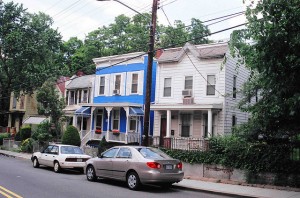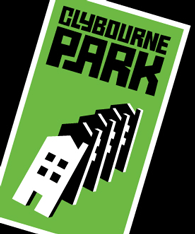The word “gentrification” elicits certain images, particularly in D.C: dog parks, coffee shops and bike lanes. But the mere presence of such things doesn’t mean residents are being displaced.
The Washington Post tried to also dispel another stereotypical marker of gentrification – white people — by profiling a group of middle and upper income African Americans who have moved into (or back) to Anacostia:
“I used to think it was about race — when white people moved into a black neighborhood,” said lawyer Charles Wilson, 35, president of the Historic Anacostia Block Association. (Wilson ran against Marion S. Barry Jr. in the 2008 Ward 8 City Council race.) “Then, I looked up the word. It’s when a middle-class person moves into a poor neighborhood, and I realized, I am a gentrifier. I couldn’t believe it. I don’t like that word. It makes so many people uncomfortable. The g-word.”
“Actually, I thought it was if you see a white guy in Anacostia, listening to an iPod, jogging or walking a dog!” joked Sariane Leigh, putting her hand on her hip and waving a sweet potato fry for emphasis. Leigh, 33, works by day helping low-income communities access education. In her free time, she writes a blog called “Anacostia Yogi,” and teaches “Soul Flow Yoga” at the Hillcrest Recreation Center on Denver Avenue in Southeast.

Elvert Barnes / Flickr
These residents chose Anacostia over other neighborhoods because they like living east of the river, and many longtime residents say they are happy to see professional blacks moving into black neighborhoods, the Post reports. Those profiled are active in the community, such as Courtney Davis who published a children’s books meant to bolster the image of kids in Ward 8. “I’m fighting for this neighborhood,” Davis told the Post. “It still has some work to do. But I’m not here to make a quick buck and run off.”
But are these new, wealthier residents making it too expensive for low-income residents to remain in the neighborhood? Typically, gentrification is thought of not just when people with more money move into a working class neighborhood; it’s also when that movement raises housing prices and prices out low-income residents. And by-and-large, displacement isn’t occurring in communities east of the Anacostia River, according to Roderick Harrison, a Howard University professor and senior fellow at the Joint Center.
“Probably the more appropriate term is ‘succession,’” he said. “People have been moving out of wards 7 and 8 because once you can afford to do so, you do. People feel they’re improving their lives with moves to Prince George’s County.”
Continue reading →










